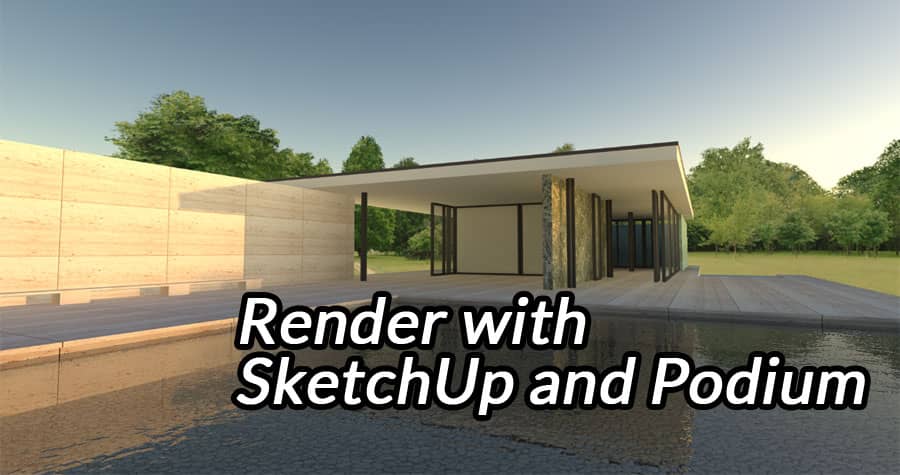Rendering is an essential aspect of architectural visualization, allowing designers to transform their 3D models into lifelike images. SketchUp, known for its user-friendly interface and versatility, paired with the powerful rendering plugin Podium, provides an accessible yet robust solution for creating stunning renders.
Getting Started: Installation
SketchUp Installation
- Download and Install: Visit the SketchUp website and download the version that suits your needs (SketchUp Make for free, or SketchUp Pro for more advanced features).
- System Requirements: Ensure your computer meets the system requirements for the version you are downloading.
Podium Installation
- Purchase or Trial: Go to the Podium website and choose either the trial version or purchase a license for the full version.
- Install the Plugin: Follow the installation instructions provided. Podium integrates seamlessly with SketchUp, and once installed, it appears as a toolbar within the SketchUp interface.
Basic Usage
Preparing Your Model:
- Build Your Model in SketchUp: Use SketchUp’s intuitive tools to create your 3D model. Focus on clean geometry and proper scaling.
- Assign Materials: Apply materials to your model. While SketchUp’s default materials are sufficient, Podium provides enhanced materials that improve rendering quality.
Setting Up Podium:
- Accessing Podium: Once installed, access Podium from the SketchUp toolbar.
- Lighting: Podium supports natural and artificial lighting. Use SketchUp’s Shadows tool to set up the sun’s position and time of day. For artificial lighting, use Podium’s light fixtures, which can be added to your model to simulate realistic lighting scenarios.
- Material Settings: Use Podium’s material editor to refine the properties of your materials, such as reflection, refraction, and bump mapping. This step is crucial for achieving photorealistic textures.
Rendering Your Scene:
- Render Settings: Before rendering, adjust Podium’s settings to balance quality and rendering time. Higher quality settings produce better results but take longer to render.
- Start Rendering: Click the render button in Podium. The plugin will process the scene and produce a rendered image.
- Post-Processing: After rendering, you can use image editing software to enhance the final image, adjusting brightness, contrast, and other parameters to achieve the desired look.
Tips for Better Renders
Optimize Your Model:
- Simplify Geometry: Keep your model as simple as possible. Overly complex geometry can increase rendering times and may cause issues.
- Use Components: Components help manage complex models and reduce the file size.
Effective Lighting:
- Natural Lighting: Use SketchUp’s geo-location feature to simulate real-world lighting conditions. Adjust the sun’s angle to highlight your model’s features.
- Artificial Lighting: Experiment with different types of light fixtures and settings to create a balanced and realistic lighting environment.
Material Realism:
- High-Quality Textures: Use high-resolution textures for better detail.
- Material Properties: Adjust reflection, refraction, and bump maps in Podium’s material editor to enhance realism.
Render Settings:
- Resolution: Render at a higher resolution for better quality, especially for final presentations.
- Anti-Aliasing: Enable anti-aliasing to smooth out jagged edges in your render.
Post-Processing:
- Software Tools: Use tools like Photoshop or GIMP for final adjustments. Correct colors, enhance lighting, and add effects as needed.
- Layers: Render different elements (e.g., shadows, reflections) separately and combine them in post-processing for greater control.
Conclusion
Rendering with SketchUp and Podium is a powerful combination that can produce stunning, realistic visualizations with relative ease. By following the steps outlined in this guide, you can enhance your architectural presentations and bring your designs to life. Whether you are a beginner or an experienced designer, mastering these tools will significantly enhance your ability to communicate your vision effectively.


